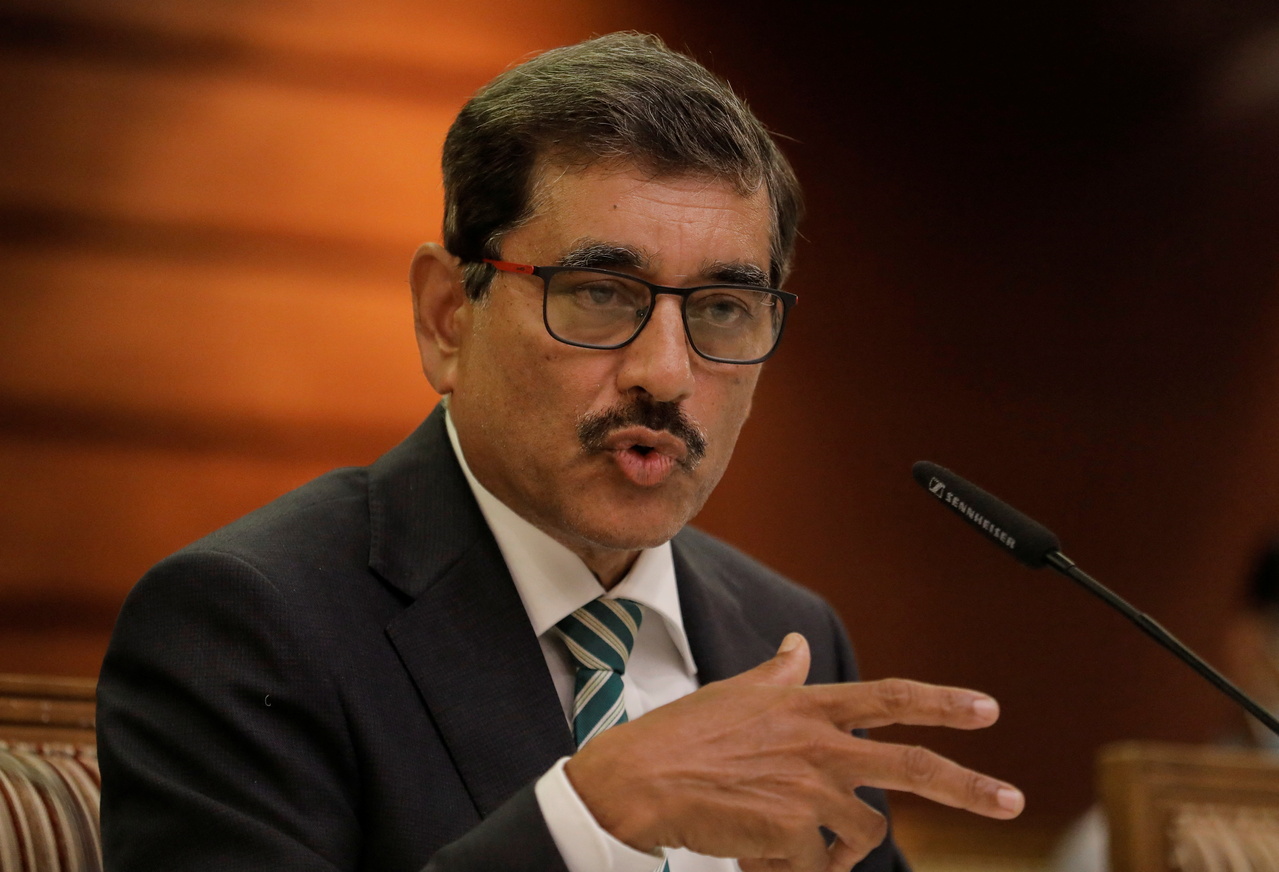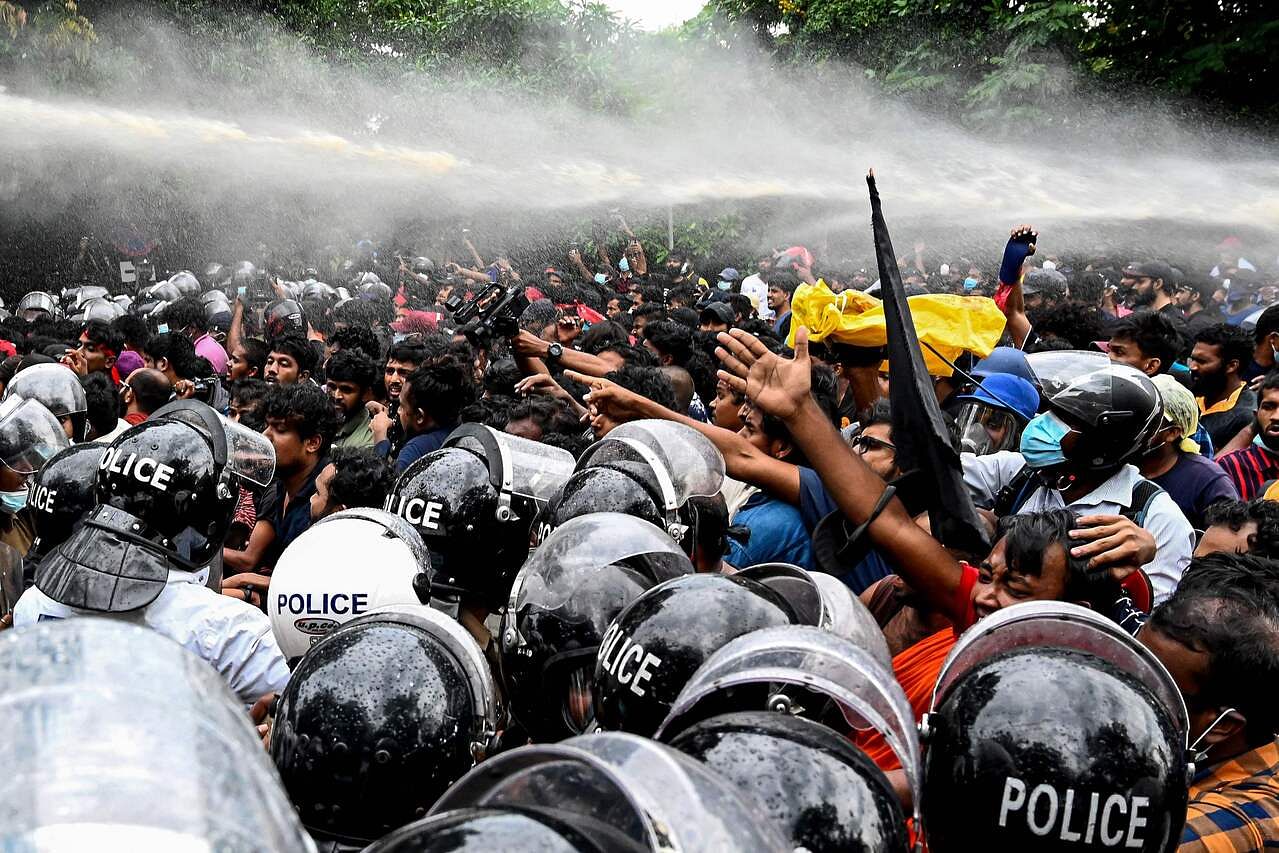Sri Lanka appoints new central bank chief amid crisis
Sign up now: Get insights on Asia's fast-moving developments

Mr P. Nandalal Weerasinghe has the unenviable job of handling the intolerable double-digit inflation.
PHOTO: REUTERS
Follow topic:
COLOMBO - A new governor was appointed to Sri Lanka's central bank in the midst of the worst economic crisis that has precipitated citizen protests against the ruling government under the Rajapaksa brothers.
Mr P. Nandalal Weerasinghe, a career central banker with experience in monetary policy and foreign exchange reserve management, has the unenviable job of handling the intolerable double-digit inflation, raising interest rate and increasing dollar reserves so that the country can buy essentials and repay international debt.
The Sri Lankan rupee has rapidly fallen to 310-315 per US dollar, inflation is over 20 per cent and foreign reserves at under US$2.3 billion (S$3.1 billion). The combination of factors has doubled food prices in the island nation and made importing essentials like rice, fuel and gas unaffordable.
Mr Weerasinghe was appointed to the Central Bank of Sri Lanka after protesters demanded a politically independent chief.
Former governor Ajith Cabraal, who was a member of the ruling Sri Lanka Podujana Peramuna and a former economic adviser to Prime Minister Mahinda Rajapaksa, resigned on Monday (April 4).
Economists in Sri Lanka welcomed the appointment of Mr Weerasinghe, a professional who could handle the intense pressure to maintain economic stability, but noted the greater problems that must be handled by a reluctant finance minister.
Former justice minister Ali Sabry was given the finance portfolio on April 4 but submitted his resignation 24 hours later, saying he was under "too much pressure". However, since the president did not accept his resignation or appoint a replacement, Mr Sabry remains the finance minister.
"The current challenges are much bigger and it requires comprehensive economic reform," said Professor Sirimal Abeyratne, who teaches economics at the University of Colombo.
Authorities have in recent months raised interest rates, devalued the Sri Lankan rupee and placed curbs on non-essential imports, but as people had to line up in long queues for diesel and face power cuts for up to 13 hours a day, the economic crisis descended into a political crisis.
President Gotabaya Rajapaksa was forced to repeal an emergency announcement in five days as crowds of angry protesters defied curfew and sweeping detention orders.
"The economics of why Sri Lanka is in a crisis is not complicated - the politicians bankrupted the country by looting us," said Mr Pradeep Gamage, a tuk-tuk driver who was protesting near Independence Square in Colombo.
Local factchecker website Team Watchdog estimated that at least 120 protests had occurred across the country since April 1, many of them in and around the capital. They demanded the resignation of President Rajapaksa and his elder brother Mahinda Rajapaksa.
But the two are defiant, staying on even after their entire Cabinet resigned. The President is now running his administration with only a handful of ministers, as the opposition and even some coalition partners rejected calls for a unity government.

<p>TOPSHOT - Police use water cannons to disperse university students, protesting against the economic crisis near the Parliament building in Colombo on April 8, 2022. - Cash-strapped Sri Lanka's central bank hiked interest rates by a record 700 basis points April 8, as police fired tear gas at hundreds of students protesting about the economic crisis. (Photo by Ishara S. KODIKARA / AFP)</p>
PHOTO: AFP
"We have medicine shortage but no minister for health. We have half-day blackouts but no energy minister. Sri Lanka has no functioning government," said Ms Dila- ni Fernando, a website designer who was drawing a sketch of a president with horns snatching food from a beggar on her poster amid the protest at Independence Square.
Sweating without electricity in her popular patisserie and cafe near Kollupitiya, Ms Melissa Peters said the long power cuts, shortage of gas and diesel, and doubled prices of flour and sugar had broken her business.
With donations from overseas Sri Lankans, she was supplying refreshments to protesters. "Earlier I would've been scared to defy the leaders but now, what do I have left to lose? They've taken everything from us, so fear has just left us," said Ms Peters.
The opposition parties plan to file a motion soon in Parliament to abolish the sweeping executive powers of the president that critics say have contributed to the economic mismanagement.
As it begins talks with the International Monetary Fund on April 11 for a bailout, the government has announced surprising holidays on April 11 and 12, two days before the new year festival on April 13 and 14. This might be to stop Parliament from functioning, buy time and arrest the momentum of growing protests, say observers.
An employee in the foreign affairs ministry, who did not want to be named, said: "It's typical, telling Sri Lankans 'Go on holiday, man,' instead of finding solutions to end our suffering. Again, the Rajapaksas are taking the people for granted."

